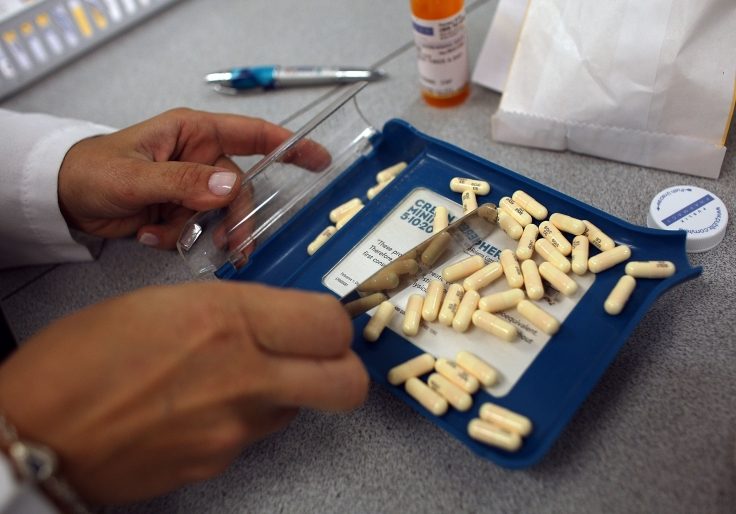The Biden administration's embrace of radical "harm reduction" facilities, which encourage drug use through the distribution of paraphernalia and instructions on how to get high, is actually hindering addicts' chances of recovering, a new study suggests.
Yale University researchers earlier this year published a study that sought to determine how cocaine-addicted minorities recover without formal treatment. The subsequent report found that social pressure, family responsibility, and spirituality—not the encouragement of safer drug consumption—helped addicts recover, findings that the study's authors hope will "inform drug treatment."
The findings are in stark contrast to liberal efforts aimed at combating drug addiction—efforts that frequently blur the line between "harm reduction" and harm promotion. The Washington Free Beacon last year uncovered a Biden administration grant program to administer "smoking kits" to addicts, thus helping them more safely consume crack cocaine, crystal methamphetamine, and "any illicit substance." One grant recipient in Maine, for example, provides users with crack and meth pipes, snorting kits, and instructions on how to smoke crack cocaine. When the Free Beacon asked the Biden-backed organization if it distributed crack pipes at a certain location, an employee responded, "Yes💯😊🥰."
Central to the facility's efforts is the belief that addicts may not be ready for abstinence and should receive help—not discouragement—to use drugs with less risk of overdose or disease. For Dr. Keith Humphreys, a Stanford behavioral health sciences professor who has advised both Democrats and Republicans on drug policy, that belief is flawed.
"The rhetoric you often hear is that disapproving of things is inherently bad, and all stigma is bad," Humphreys told the Free Beacon. The evidence does not sustain the belief that "stigma is inherently an evil force," Humphreys argued, pointing to dramatic declines in cigarette smoking, drunk driving, and male-on-female domestic violence.
"I think the decline in all three of those things is linked to greater social disapproval," Humphreys said. "Social disapproval are these guardrails that we collectively use to discourage behavior that we think is destructive."
Neither the White House nor Biden's Department of Health and Human Services returned requests for comment.
Beyond funding smoking kits, which commonly include crack pipes and other paraphernalia, the Biden administration has also taken steps to consider the implementation of so-called safe injection sites across the country. Those sites provide addicts a place to inject their drugs with sterile needles while staff members watch for signs of overdoses. The sites frequently become gathering places for addicts.
The federal government has historically been against the implementation of those sites, with the Trump administration in 2019 suing to stop one from opening in Philadelphia. Under Biden, however, the Justice Department has indicated a reversal, announcing last year that it was "evaluating" such facilities and speaking with regulators about implementing them.
While the federal government is still mulling over the idea, several U.S. cities and the state of Rhode Island have green-lit the establishment of these sites. Last year, New York City officials became the first to authorize private entities to set up "safe injection sites."
Oregon, meanwhile, has gone as far as to decriminalize all drugs for personal use. The move, which the state legislature passed in 2020, has largely been considered a failure, as overdose rates in the state almost doubled between 2019 and 2021. The national average, by comparison, rose at a much lower rate during that time, according to the Economist.
While Humphreys agreed that the situation in Oregon has been "disastrous," he conceded that not all harm reduction efforts are bad, such as the distribution of naloxone, the opioid overdose reversal drug, and syringe exchanges.
"I think it really matters the spirit in which you do things," Humphreys said, arguing that some harm reduction programs operate "with the assumption that the end aspiration is recovery" while others merely "spend our tax dollars to support their right to use drugs."
"I think in those two different spirits, I think you get very different outcomes," Humphreys continued. "I'm much more sympathetic with the systems that say, ‘We're doing this not because we think it's great to use drugs—or that we think that we should never criticize or in any way disapprove of drug use—we're doing this because we have this long term hope of what we consider a better life for this person.’"
Many liberal cities do not seem to agree with Humphreys. In San Francisco, for example, the city erected a billboard instructing residents to use deadly opioids "with friends." The billboard showed a group of well-dressed and happy people partying together, insisting it was best to use drugs in groups, or at the least "have someone check on you" while doing them.
"Let’s take care of each other, San Francisco," the billboard stated.
